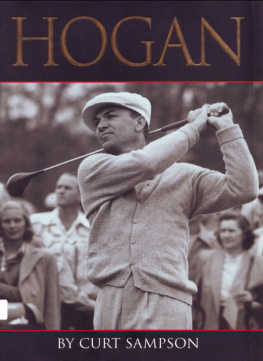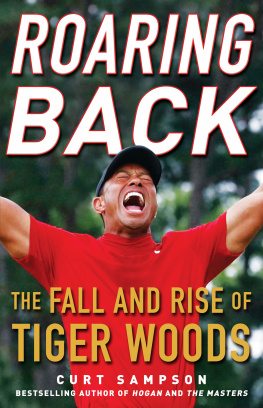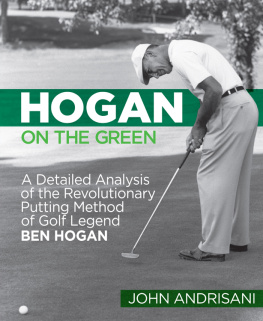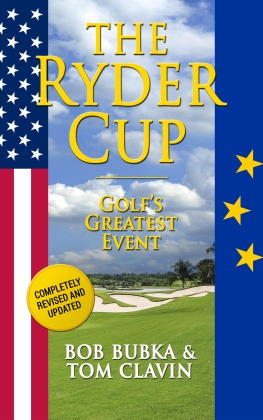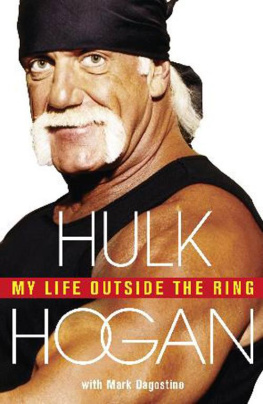Curt Sampson - Hogan
Here you can read online Curt Sampson - Hogan full text of the book (entire story) in english for free. Download pdf and epub, get meaning, cover and reviews about this ebook. year: 2001, publisher: Thomas Nelson, genre: Non-fiction. Description of the work, (preface) as well as reviews are available. Best literature library LitArk.com created for fans of good reading and offers a wide selection of genres:
Romance novel
Science fiction
Adventure
Detective
Science
History
Home and family
Prose
Art
Politics
Computer
Non-fiction
Religion
Business
Children
Humor
Choose a favorite category and find really read worthwhile books. Enjoy immersion in the world of imagination, feel the emotions of the characters or learn something new for yourself, make an fascinating discovery.
- Book:Hogan
- Author:
- Publisher:Thomas Nelson
- Genre:
- Year:2001
- Rating:4 / 5
- Favourites:Add to favourites
- Your mark:
- 80
- 1
- 2
- 3
- 4
- 5
Hogan: summary, description and annotation
We offer to read an annotation, description, summary or preface (depends on what the author of the book "Hogan" wrote himself). If you haven't found the necessary information about the book — write in the comments, we will try to find it.
This updated edition of a NEW YORK TIMES best seller includes a final chapter, which chronicles the last years of his life and examines his enduring legacy. Included are quotes and tributes from many of golfs greats such as Byron Nelson and a perceptive assessment of the life and legend of the man who may have been the greatest golfer ever-Ben Hogan.
Hogan — read online for free the complete book (whole text) full work
Below is the text of the book, divided by pages. System saving the place of the last page read, allows you to conveniently read the book "Hogan" online for free, without having to search again every time where you left off. Put a bookmark, and you can go to the page where you finished reading at any time.
Font size:
Interval:
Bookmark:

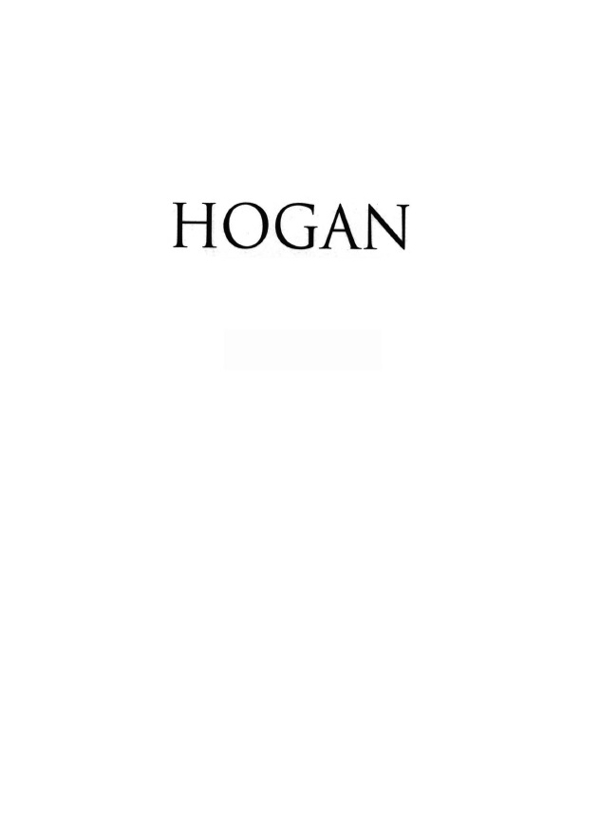
Other books by the author:
Texas Golf Legends
The Eternal Summer: Palmer, Hogan, and Nicklaus in 1960, Golfs Golden Year
Full Court Pressure
Copyright 1996 by Curt Sampson.
All rights reserved. Written permission must be secured from the publisher to use or reproduce any part of this book, except for brief quotations in critical reviews and articles.
Published in Nashville, Tennessee, by Rutledge Hill Press, 211 Seventh Avenue North, Nashville, Tennessee 37219.
Distributed in Canada by H. B. Fenn & Company, Ltd., 1090 Lorimar Drive, Mississauga, Ontario L5S 1R7.
Distributed in Australia by Millennium Books, 13/3 Maddox Street, Alexandria NSW 2015.
Distributed in New Zealand by Tandem Press, 2 Rugby Road, Birkenhead, Auckland 10.
Distributed in the United Kingdom by Verulam Publishing, Ltd., 152a Park Street Lane, Park Street, St. Albans, Hertfordshire AL2 2AU.
Typography by E. T. Lowe, Nashville, Tennessee
ISBN 978-1-4185-3613-8 (eBook)
Library of Congress Cataloging-in-Publication Data
Sampson, Curt.
Hogan / Curt Sampson.
p. cm.
Includes index.
ISBN 1-55853-387-7 (hardcover)
1. Hogan, Ben, 1912- . 2. GolfersUnited StatesBiography. I. Title.
GV964.H6S25 1996
796.352'092dc20
[B}
964567
CIP
1 2 3 4 5 6 7 8 999 98 97 96
To caddies
CONTENTS
A small army of people helped with this book. The generals in the army were Jim Donovan, president of Jim Donovan Literary in Dallas; Mike Towle and Lawrence Stone of Rutledge Hill Press; and my familyCheryl, Clay, and John.
Author John Strawn, Texas Golf Hall of Fame curator Frances Trimble, and historians Peter Bown, Dan Greenwood, and Mike Brown dropped whatever they were doing when I called for help and advice, and I am extremely grateful to them.
Invaluable medical insights were provided by Dr. Fran Pirozzolo, Dr. Cheryl Sampson, Dr. Craig Farnsworth, Dr. Rob Hillery, Dr. Greg Pearl, Dr. Rob Rutledge, and Sylvia Foladare.
Among the golf professionals whose help and insight I depended on were Byron Nelson, Jack Nicklaus, Jay Hebert, Herman Keiser, Jackson Bradley, Henry Picard, Jack Burke Jr., Sam Snead, Jack Fleck, Don January, Ken Venturi, Freddie Hawkins, Frank Wharton, Hal Underwood, Tod Menefee, Shawn Humphries, Gilbert Freeman, Jimmy Gauntt, Larry Box, Mike Morrow, and Dan Strimple.
David Hueber, Gene Sheeley, Elgin Berry, Jerry Ostrey, and Charles Harris of the Ben Hogan Company explained Hogan the businessman, eloquently and affectionately.
Guy Yocom of Golf Digest, whose knowledge of Hogan is unsurpassed, was wonderfully open with his opinions and information. Jim Frank and Mike Purkey of Golf magazine helped get me startedand finished. Herbert Warren Wind, the Shakespeare of golf writers, was kind and helpful as usual. Jim Apfelbaum, the Sam Levenson of golf writers, spent an entire day finding and reading Follow the Sun star Glenn Fords autobiography. It turned out to be about gardening. Rare golf book dealer Dick Donovan ferreted out facts I would never have found on my own.
I also appreciate the help of Robert Atkinson Jr., Marte Bassi, Troy Baxter, Tom W. Blake, Jon Bradley, Hal Brewer, Walter Buenger, John Capers, Nancy Castiglione, Bill Cowan, Mike Daniels, Burt Darden, John David, John Derr, Lester Epps, Bill Gray, Gaylen and Sally Groce, Merle Hancock, Johnny Henry, Francisca Hernandez, Frances Hirsh, Blake Hodges, Carolyn Holden, Clem Jensen, David Johnson, Julie Ketterer, Joy Lynn King, Chuck Kocsis, Mike Kondrat, Mary Margaret Lashbrook Kowalski, Christy Krames, Bo Links, Mike and Mary Long, Margaret Maves, Janet Maynard, Chris Millard, Ed Moughon, Tim Murphy, Barbara K. Ordway, Tom Otteson, David Parker, Russ Pate, James Peebles, Ann Peeler, Steve Pike, Jim Reed, Matty Reed, Bob Rickey, Dennis Roberson, Judy Ross, John H. Sampson, Robert and Ann Sampson, Bill Sebelin, Tom Steinhardt, Carlton Stowers, Jerre Todd, Peter Walsh, and Bob William.
Ladies and gentlemen, thank you.
B en Hogan hit golf balls until his hands bled. How many hundreds of times did I hear that when I was a kid?
The first time I heard it must have been at the overgrazed public course a few miles from our house. One of the regulars, Ed Romito or Bernie Washko or Jim Lacina, or the pro, Bill Shoaf, would spot me as I walked from the rock-strewn practice range to the putting green, a putter in one hand, a Mr. Frosty root beer in the other, and three or four of my best balls in my back pocket. They knew I was mesmerized by golf.
They all smoked. You know, Ed or Bernie or Jim or Bill would say, exhaling blue clouds, Hogan used to hit balls until his hands bled.
The Christlike image of bleeding hands on a golf club hit me and stuck, a fly on the mental flypaper of a fourteen-year-old boy. What manner of man or madman or masochist or golf messiah would torture himself like that? Should golf be practiced until it hurt? I began to believe it should. Blood seeped from my knuckles as I hit more and more ballsnot really such a big deal, as I bleed easily. But I got the attitude, too. I became (I thought) cold, implacable, unflappable, a golf-ball-hitting machine. Hogan still hits the ball better than anyone else in the world, the four wise men told me, clicking shut their Zippos, blowing their smoke. But he cant putt. I couldnt either.
Yesterday, twenty-nine years later, I hit balls with Ben Hogans clubs. It felt like clacking out a paragraph on Hemingways typewritera delicious, guilty, and totally unauthorized pleasure. Strange sticks, too. The rough-textured cord grips are significantly oversized and turned slightly counter-clockwise. The heads are very heavy, with two-degree flat lies that remind you of hockey sticks. The twelve custom-made putters he was trying the last time he played or practiced all have the length, lie, and grip of his six-iron, and all have lead tape, for added weight, under the grips. The most unusual of the putters has little sighting devices epoxied to the top of the offset brass blade, like the eye pods on a hammerhead shark. From the crest of the hill on the eighth fairway at Shady Oaks Country Club in Fort Worth, I hit Ben Hogans one-iron and his black, wooden three-wood, trying to imitate his flat, ferocious slash and the gentle left-to-right curvature of his shots. Then I stabbed a few putts with one of his weird putters. Seven hundred yards away, Hogan sat in his customary chair by the window in the Mens Grill, a cold, implacable, unflappable old man eating lunch.

Purists, the golf worlds most influential subset, have long regarded Hogan with an almost religious awe. Here was a man who let his clubs do his talking. His clothes and equipment were uncluttered by logos, his swing a work of art. Check the office walls of Ben Crenshaw, Jack Burke Jr., or any of a thousand other defenders of the traditional game of golf, and you will find the same photograph: Hogan in a mythic pose, following through after drilling a one-iron shot to the final green at the 1950 U.S. Open at Merion. He was in terrific pain at that moment, and you can almost make out the bandages on his legs. Some visitors to Shady Oaks watch him eat while pretending not to, like lonely boys in the high school cafeteria, stealing glances while the homecoming queen nibbles her baloney and cheese. But thats as close as you get because the first rule for a guest at Shady Oaks is to leave Mr. Hogan the hell alone.
Next pageFont size:
Interval:
Bookmark:
Similar books «Hogan»
Look at similar books to Hogan. We have selected literature similar in name and meaning in the hope of providing readers with more options to find new, interesting, not yet read works.
Discussion, reviews of the book Hogan and just readers' own opinions. Leave your comments, write what you think about the work, its meaning or the main characters. Specify what exactly you liked and what you didn't like, and why you think so.

